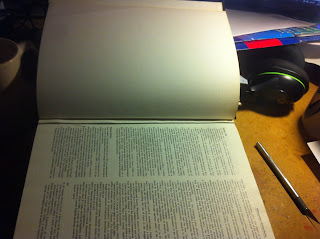 I've suffered from back pain for a few months, and there's a suggestion that it may stem from my use of a messenger bag continuously for the last 8 years or so. Hence I've decided to replace it.
I've suffered from back pain for a few months, and there's a suggestion that it may stem from my use of a messenger bag continuously for the last 8 years or so. Hence I've decided to replace it.Of the options available, I found only a couple that I liked. Simple stying for day to day use, and durable materials for the same reasons. A decent harness, and somewhat waterproof were the other requirements.
It also needed to be large enough to to swallow shoes, and a change of clothing in a main compartment, not bulked out with dividers and mesh that will get caught on everything.
In the end I went with a Mammut Courier 25L - It's only drawback is that it has only a small front pouch, 2 small zip pockets - both inside other pockets, the main compartment, and a laptop sleeve.
None of these will easily hold my bike tool kit as they are too deep, or too hard to get into easily. I saw a Silca tool wrap a few months ago, so I figured that would be a solid solution, keeping things together, and making it easier to find what I wanted if needed.
The design work started with a bunch of googling existing products. At some point I saw a design which had sealed pockets on both sides, while keeping the tool roll closure. This seemed likely to be more secure - I've had some issues in the past when I've made tool rolls for other things.
I made one roughly, shown here, and then made a few tweaks to even it up and make a nicer looking one.
I decreased the overall width a little, so one side rolls over again - this should allow me to tuck a $20 note inside, as well as other very small things.
 |
| The final product. It rolls up to be just larger than the tube, and holds a small multitool, a few levers and a tube. |


































